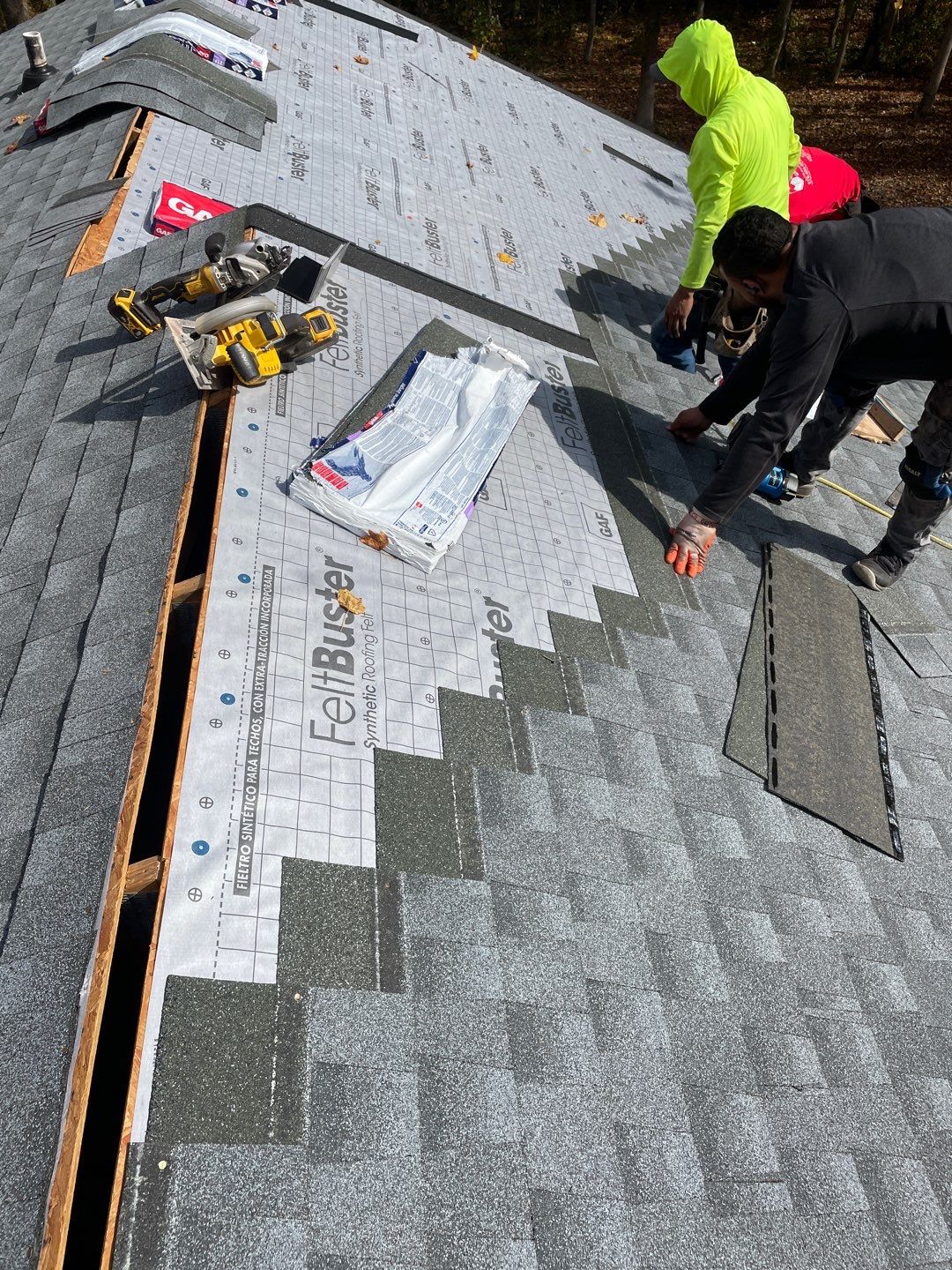Vital Concerns to Ask Gainesville Roofing Companies Before Employing
Ideal Practices for Ensuring Correct Roofing Air Flow
Guaranteeing correct roof air flow is crucial for the durability and effectiveness of a roofing system. A well balanced consumption and exhaust vent ratio, frequently 1:300, plays an essential role, with consumption vents preferably placed at the reduced edge of the roofing system for great air entry and exhaust vents at the peak for warm air leave. Normal inspections to determine blockages and keep clear air movement are critical. Moreover, keeping insulation away from vents is important to stop air movement restriction. Comprehending these foundational elements sets the stage for even more comprehensive understandings right into installment and maintenance methods that can significantly enhance your roof system's efficiency.
Understand Air Flow Basics
Correctly understanding ventilation fundamentals is vital for making certain the longevity and performance of roof systems. Reliable air flow reduces moisture accumulation and temperature extremes in the attic, both of which can cause substantial architectural damage gradually. A well-ventilated roofing helps in preventing common issues such as mold development, timber rot, and ice dams, which can jeopardize the integrity of the roofing materials and the underlying structures.
The key objective of ventilation is to help with the motion of air, enabling a consistent exchange in between the indoor and outside environments. This equilibrium is accomplished with a combination of intake and exhaust vents that collaborate to maintain optimum airflow. Consumption vents, commonly located along the eaves or soffits, allow fresh air to get in the attic room room, while exhaust vents, frequently positioned at or near the roof covering ridge, make it possible for hot, moist air to run away.
Secret aspects affecting the performance of roof air flow include correct positioning, adequate sizing, and guaranteeing that both consumption and exhaust vents are unhampered. Regular examination and upkeep are important to determine possible clogs, damage, or inefficiencies in the air flow system, consequently guarding the roofing's performance and toughness.
Sorts Of Roofing Vents
Roofing system vents play a crucial role in maintaining effective attic room ventilation and, by expansion, the general wellness of the roofing system. Various kinds of roofing system vents are offered, each with one-of-a-kind benefits tailored to specific roof covering needs.

Soffit vents are installed under the eaves and operate in tandem with roof vents to make sure a well balanced intake and exhaust system. By permitting cooler air to enter from below, soffit vents promote the expulsion of hot air via upper vents. Gable vents, situated on the outside wall surfaces of the attic, deal another reliable service, specifically in homes with saddleback roofs.
Evaluate Your Current Ventilation

Next, consider the age and condition of your roofing products and ventilation components. Older systems may not follow present building regulations or might have worn away gradually, decreasing their efficiency. Conduct a complete evaluation to recognize any kind of indicators of deterioration, such as corrosion, damages, or voids that might endanger the system's efficiency.
In addition, determine the attic room temperature and humidity degrees. High temperatures and humidity can indicate poor ventilation - gainesville roofing companies. Make use of a hygrometer and thermometer to get exact readings, comparing them with outside problems. Relentless inconsistencies suggest possible problems that need dealing with.
Setup Best Practices
Reliable installment of roof air flow systems is paramount anonymous for making certain optimum efficiency and longevity. Proper installment begins with understanding the particular air flow requirements of the roof covering and the structure it covers. This entails determining the proper ratio of intake to tire vents, commonly sticking to the 1:300 regulation, which stipulates one square foot of air flow for each 300 square feet of attic room flooring area.

Consumption vents should be set up at the roof's reduced side, frequently in the soffits, to enable great air to go into. Exhaust vents, on the various other hand, should be installed near or at the roofing system's height to facilitate the departure of warm, damp air.
Seal all air vent links meticulously to avoid air leaks and prospective water infiltration. Usage top notch products and comply with producer guidelines to make sure sturdiness and efficiency. Furthermore, incorporating ridge vents with baffles can significantly enhance airflow efficiency by stopping wind-driven rainfall and snow from going into the attic.
Eventually, specific setup of roof ventilation systems mitigates potential problems such as mold development, ice dams, and structural damage, making certain the roof covering's stability and the building's general health and wellness.
Regular Maintenance Tips
Consistency in upkeep practices is fundamental to making sure the lasting efficiency of roofing air flow systems. Regular inspections are vital, ideally carried out biannually-- in the springtime and loss. Throughout these inspections, make sure that vents are complimentary of debris, nests, and various other obstructions that could hinder air flow. Look for any indicators of moisture build-up or mold, as these can suggest improper air flow or leaks (roofing companies gainesville florida).
Utilize a soft brush or a vacuum cleaner to remove dirt and debris from consumption and exhaust vents. Be cautious not great site to harm the air vent screens or louvers during the process.
Proper insulation is similarly vital. Ensure that attic insulation does not block the vents, as this can badly restrict airflow. Reposition or replace it to preserve a reliable obstacle. if any insulation has moved or worked out.
Lastly, replace any harmed or missing out on parts promptly. Busted vents, broken roof shingles, or tatty blinking can all add to poor air flow and needs to be dealt with without hold-up. Regular upkeep ensures that the roof covering ventilation system functions optimally, thus expanding the life-span of the roof covering itself.
Verdict
Making certain correct roofing air flow get redirected here is critical for maintaining the effectiveness and sturdiness of a roof system. Adherence to the 1:300 intake and exhaust vent ratio, combined with the tactical placement of vents, is crucial.
A balanced consumption and exhaust air vent proportion, frequently 1:300, plays a crucial role, with consumption vents preferably positioned at the lower side of the roofing system for great air access and exhaust vents at the peak for cozy air departure. Consumption vents, usually situated along the soffits or eaves, allow fresh air to go into the attic room room, while exhaust vents, usually situated at or near the roofing ridge, allow hot, moist air to leave.
Soffit vents are installed under the eaves and work in tandem with roof vents to guarantee a balanced intake and exhaust system. By allowing cooler air to go into from below, soffit vents assist in the expulsion of warm air through upper vents. Adherence to the 1:300 intake and exhaust vent proportion, coupled with the strategic placement of vents, is necessary.